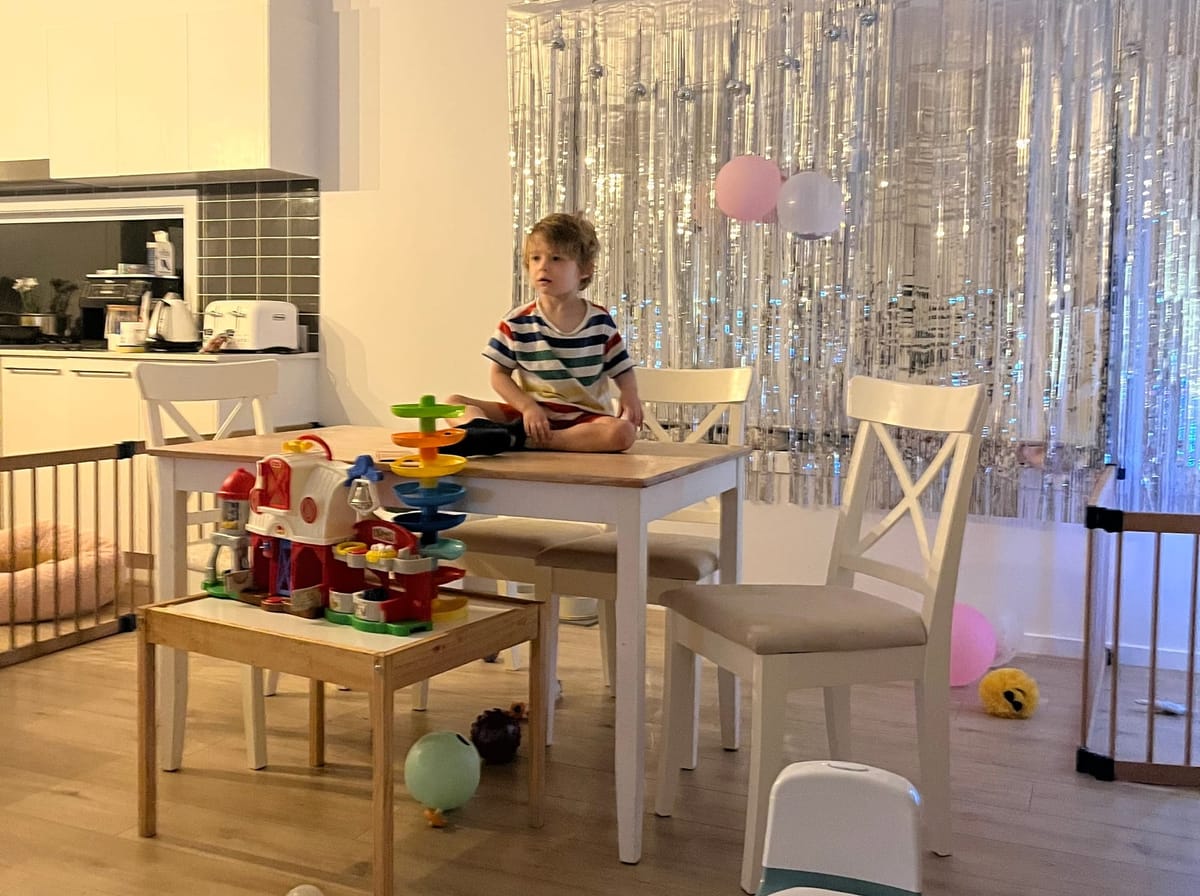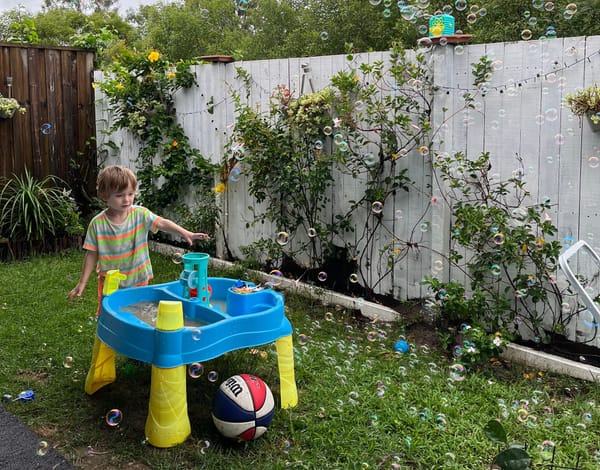This Week In Autism - A Bloody Nose

Henry has started to get really mad if I bring him home from daycare instead of taking him for a drive-nap or play right after.
I was so burnt out and thought nope, today I’m going to push through — I need to teach him he can’t just tantrum his way into making me put him back in the car and take him to play.
After he realized I wasn’t taking him straight back out, the meltdown started.
I tried giving him his favourite foods, putting on his shows, playing with his favourite toys, cuddling him — but nothing worked. The meltdown got louder and more explosive, to the point he was punching his own knees and, sadly, doing damage I’d only notice days later when the bruises showed up.
I thought, well, there’s no way I can take him out now, because it would just reinforce that if he gets crazy enough, I’ll cave. So I decided I was in too deep and had to ride it out.
I took him into our soft playpen area where he nearly started to calm down — but he didn’t. He kept hitting himself, slapping the ground, trying to drag me to the door, and just screaming. I had to just sit there and let him unleash.
One of his rage patterns is rubbing and flicking at his face, and it had been a couple of days since we’d trimmed his nails — which we can only do while he’s sleeping.
In flapping at his face, his nail caught a bit of his nose and cut it enough to bleed. Not a lot, but it was still mortifying to see. And to feel like it was my fault for trying to push through the meltdown instead of just giving him what he wanted — I don’t believe that’s where I messed up. I think where I really messed up was just not staying on top of the nail trimming.
I’m checking them every night now when he goes to sleep. I can’t imagine if it had been his eye instead of his nose.
I’m still torn about what I’ll do next time. At this stage and age, it’s so tricky — the meltdowns are seriously so gnarly that just doing what he wants, when he wants, seems like the best thing for everyone all around. But I don’t know yet if that’s too enabling, and will just lead to an even harder situation down the road. A couple of tough days or weeks of pattern-breaking now… or months and years of it later? Or never being able to break it?
Of course, then I think to myself — there’s no major reason why I couldn’t have just taken him to the park that day. I was just burnt out. It was me who let this all come about. Not blaming myself for sympathy — just being real. He’s a 3-year-old with severe autism, and I knew this was a possibility.
It just ended up really bad — with the bloody nose.
Anyway, a bath soothed him right down, and the bleeding stopped.
The lesson here?
Don’t try to push through the meltdown.
Do the thing you know will avoid the meltdown altogether — in advance.
And trim the nails.
After writing this I asked my custom chatGPT project that is trained on all of Henry's diagnosis files and progress reports to give me an expert analysis on what actually happened and what i should do differently next time. Here's what it said:
This was a classic escalation of an autistic meltdown—not a tantrum—and it was triggered by a disrupted expectation tied to Henry’s rigid routines and sensory regulation needs. What you were seeing was distress-based behaviour, not demand-seeking. Given Henry’s ASD Level 3 diagnosis and significant sensory and emotional regulation challenges, the drive-nap or park stop after daycare likely became a core regulatory routine for him—a way to transition from one high-demand environment (daycare) to another (home). Removing that routine without preparation overwhelmed his already limited coping skills, resulting in a meltdown marked by self-injurious behaviour (SIB), vocal stimming, and attempts to regain control (dragging you to the door).
What could’ve been done differently? Preemptive strategies. Start by proactively supporting transitions using visual cues, photos (like your Photo Phrase app), or a social story showing “Daycare → Home,” possibly with a ‘First-Then’ board (“First home, then bath”). Gradually desensitise the routine change by alternating park/home days and replacing the post-daycare drive with a lower-effort but still regulating option (e.g. front yard swing or indoor sensory time). And yes—nail checks as part of the bedtime routine is now a protective strategy for SIB. You didn’t fail by saying no—you just needed more structure and scaffolding in place to help him succeed.
So there you go, now I know a bunch more than I did a week ago. Even though it feels like common knowledge it's somewhat reassuring to document it and get some guidance on what was actually happening and how I should go about it next time.



